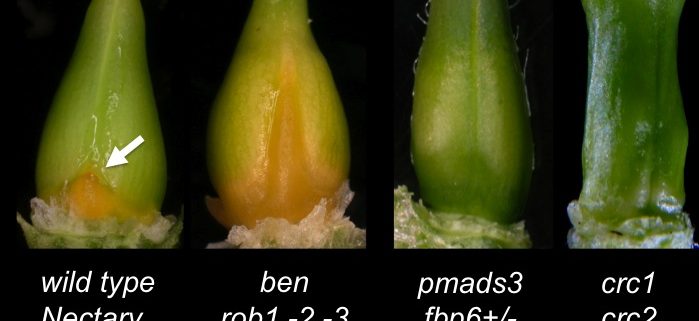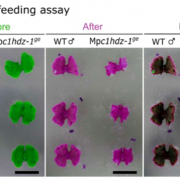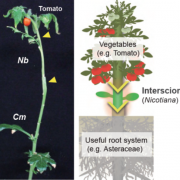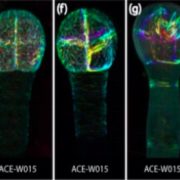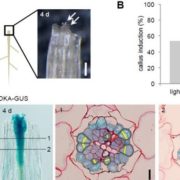Nectary Development in Petunia and Arabidopsis, a Sweet Story!
Morel et al. study the nectar-producing organs in flowers and identify major regulators of nectary size https://doi.org/10.1105/tpc.18.00425
By Patrice Morel and Michiel Vandenbussche
Background: Nectaries are the organs that produce nectar, a sugary substance that motivates pollinators such as insects to visit flowers and subsequently pollinate them, thus ensuring the plant’s reproductive success. During evolution, nectaries are believed to have evolved several times independently, and they may develop on different positions in the flower depending on the plant species. Thus far, the genetic basis of nectary development has been studied in detail only in Arabidopsis, a species with nectaries positioned at the base of its stamens, the male organs in the flower.
Question: To improve our understanding of how nectaries evolved and how they develop, we wanted to find the genes responsible for nectary development in species that have nectaries located in a different position in the flower compared to Arabidopsis. We analyzed nectary development in petunia flowers, which have their nectaries growing at the base of the ovary, the female reproductive organ.
Findings: By analyzing petunia plants in which specific genes have been mutated, we found flowers that do not make nectaries anymore, or on the contrary, have much bigger nectaries than normal. This allowed us to identify the petunia genes that are required to make nectaries, as well as the genes that control the size of these organs. Using this information, we found that the same (homologous) genes promote nectary development in petunia and Arabidopsis. However, they are active, or expressed, in different places in the flowers of the two species, explaining why petunia and Arabidopsis develop nectaries in different positions. This suggests that nectaries in petunia and Arabidopsis have a common evolutionary origin, despite their different developmental patterns.
Next steps: From our experiments and previous studies in Arabidopsis, we concluded that the activity of the identified nectary-promoting genes must be combined with that of one or more other genes to make nectaries develop in the appropriate location in each species. Future research should try to identify these unknown genes to fully understand the genetics behind the origin of nectaries.
Patrice Morel, Klaas Heijmans, Kai Ament, Mathilde Chopy, Christophe Trehin, Pierre Chambrier, Suzanne Rodrigues Bento, Andrea Bimbo, Michiel Vandenbussche (2018). The floral C-lineage Genes Trigger Nectary Development in Petunia and Arabidopsis. Plant Cell 30: 2020-2037 https://doi.org/10.1105/tpc.18.00425.


